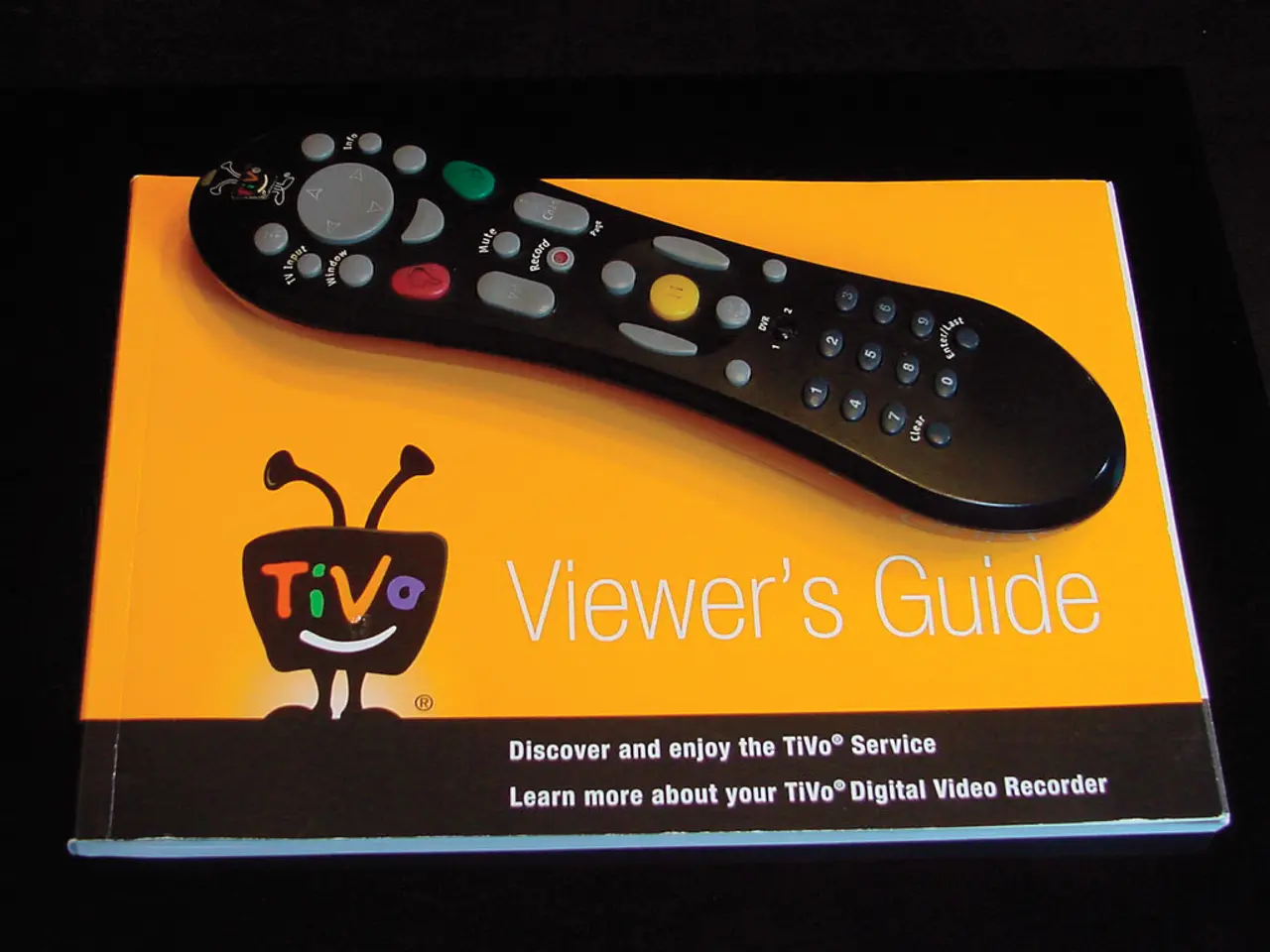Reviving Archaic Frugality Practices in 2025: A Look at Seven Timeless Tips for Budget-Conscious Living
Living Frugally in the 21st Century: Lessons from the Roots of Frugality
Hey there! Let's talk about frugal living, a strategy that has become a necessity for many modern families. With the cost of living continuing to rise and inflation not slowing down, mastering the art of thriftiness has become more important than ever. So, why not learn from our ancestors' wisdom and techniques? Here's a fresh take on the classic strategies used back in the 1950s to live frugally, save money, and build remarkable skills.
1. The Cash Envelope System
Remember the good old days when credit cards weren't the norm, and there were no digital payments? Our grandparents managed to stay on budget by using a simple yet effective budgeting system called the cash envelope system. It's time to bring this remarkable tool back to life!
Using the cash envelope budget system for groceries, transportation, and entertainment expenses can make your budgeting experience crystal clear. It operates brilliantly in contrast to our contemporary buy-now-pay-later culture. Once you start budgeting with cash, you'll begin to appreciate the value in your money and make more mindful purchasing decisions.
2. Cooking from Scratch
Back in the day, drive-throughs or frozen meals were as alien as another planet. People relied on basic pantry staples, like flour, beans, rice, and seasonal produce, to create homemade meals. The advantages of cooking at home are two-fold: not only does it save you hundreds on your monthly grocery bill, but it also allows you to create nourishing meals from the comfort of your home and build family traditions around the dinner table.
Simple, flexible recipes like soups, casseroles, and stir-fries can make cooking at home feel effortless rather than overwhelming. By doing so, you're not just saving money but also creating healthier meals than anything you could find in a store.
3. "Use It Up, Wear It Out, Make It Do, or Do Without"
This old principle is a perfect reminder of how to prolong the life of your belongings and resist the temptation to buy things you don't truly need. Understanding that every item has value gives you the ability to extend its life span, so embrace this mindset for a waste-free lifestyle.
Repairing clothes, furniture, or any household items you own can save you a significant amount of money in the long run. Simple skills like sewing, mending, and patching can be easily mastered, and the benefits of learning these life-sustaining skills extend far beyond wallet- conscious decisions.
4. Victory Gardens and Growing Your Own Food
The victory gardens of World War II lasted well into the 1950s as families continued to cultivate their own food to reduce their reliance on grocery stores. Growing even small herb gardens on windowsills or participating in community gardens can provide you with fresh produce at a fraction of retail prices.
By growing your food in small spaces, you're saving money while consuming fresher and more flavorful ingredients than anything from the store. You don't need a backyard to enjoy the advantages of a garden– start with simple herbs on windowsills and expand as your skills grow.
5. Line-Drying Clothes and Energy Conservation
Drying clothes on a clothesline is an eco-friendly and affordable way to tackle household chores. Quality bath towels take a long time to dry in the dryer and consume a lot of energy, but a towel hung outside on a clothesline takes only the power of nature to dry and smells wonderful.
Line-drying clothes can help you save on energy costs throughout the year. For sunny days, install outdoor lines, and for winter months, use drying racks indoors. Encourage your kids to help you hang the clothes on the line – it can make an ordinary chore into a fun family activity!
6. Investing in Quality Over Quantity
While the immediate price tag may seem enticing when purchasing products with a lower price point, opting for cheaper alternatives can lead to repeated purchases and unnecessary spending. Quality items usually last longer, provide more value, and often cost less over time because they require fewer replacements.
Focus on buying items that are well-crafted, durable, and worth the investment, particularly when it comes to frequently used items such as shoes, appliances, tools, and furniture. The "buy it for life" movement is an excellent example of this wisdom, showcasing that spending more upfront may be morecost-effective in the long run.
7. Eliminating Food Waste and Maximizing Leftovers
In the past, wasting food was simply not an option, and every leftover was given a second life. repurposing leftovers helped reduce waste and save money.
Plan your meals according to the ingredients you already have on handand make creative combinations. Educate yourself on the differences between "sell by," "use by," and "best by" dates. Start with simple "refrigerator cleanout" recipes that can help you transform leftovers into nutritious meals. Reducing food waste can help you save money (and the environment) by reducing expenditures on new food.
Case Study: Rhonda's Journey to Frugality
Rhonda was living paycheck to paycheck, even though she and her family had good jobs. Feeling the pressure of mounting costs, she decided to seek inspiration from the stories of resourcefulness passed down by generations. By implementing a few old-school frugal habits, Rhonda greatly reduced her family's monthly expenses while gaining valuable life skills.
She started by adopting a modified version of the cash envelope system and saw an immediate difference in her spending habits. Next, she began preparing weekly meals, cooking from scratch, and bringing lunches to work, dramatically reducing their grocery bill. By focusing on using, repairing, and maximizing the life of their possessions, Rhonda's family saved even more money. Within six months, they had reduced their monthly expenses by nearly 30%.
Rhonda reflects, "The habits I started using were born out of necessity, but the lessons in resourcefulness and the savings we've experienced are now permanent parts of our lives. Plus, the satisfaction of being self-sufficient is unmatched."
Key Takeaways
- Implementing old-fashioned frugal habits can save most households a significant amount of money each month without sacrificing an enjoyable lifestyle.
- The cash envelope system helps prevent overspending on discretionary expenses while making everyday finances feel more tangible.
- Cooking from scratch can reduce food costs by up to 40%, providing healthier, more nutritious meals.
- Learning basic repair skills helps to extend the life of possessions, saving you money over time.
- Growing your own food, even in small spaces, provides fresh produce at a fraction of retail costs.
- Line-drying clothes and consciously conserving energy can result in substantial reductions in monthly utility bills.
- Investing in quality items that last longer costs less overall.
- Eliminating food waste and maximizing leftovers can help families save hundreds of dollars monthly.
- Embracing these practices transcends generations, providing tested solutions to modern challenges and promoting financial resilience.
Final Thoughts
Frugal living is not about cutting joy from your life or returning to a bygone era of scarcity. Instead, it's about making thoughtful decisions that align with your financial goals while following the proven wisdom of previous generations. Start with one or two practices that resonate the most with your situation, and build from there.
Explore the lessons in resourcefulness from the 1950s while incorporating modern tools and technologies to create greater financial security for your future. The wisdom of the past offers powerful, time-tested strategies that will enable you to weather any economic storm and thrive financially.
- Adopting the cash envelope system for groceries, transportation, and entertainment expenses can make budgeting more transparent, contrasting with contemporary buy-now-pay-later culture, leading to mindful spending.
- Cooking meals from scratch using basic pantry staples like flour, beans, rice, and seasonal produce not only saves money but also fosters healthier eating habits and encourages the creation of family traditions.
- Embracing the old principle "Use It Up, Wear It Out, Make It Do, or Do Without" can help prolong the life of possessions and enhance a waste-free lifestyle by repairing clothes, furniture, and household items.
- Planting a small garden, even on a windowsill, to grow herbs and other produce offers an opportunity to save on food costs while consuming fresher and more flavorful ingredients.
- Line-drying clothes as an eco-friendly alternative to dryers can help save energy costs throughout the year, making household chores more affordable, and turning them into a fun family activity.
- Opting for quality items, particularly for frequently used items such as appliances, tools, and furniture, may cost more initially but are likely to last longer, providing more value and potentially saving money in the long run.
- Reducing food waste and maximizing leftovers through creative meal planning and recipes can lead to substantial savings on food expenditures.







